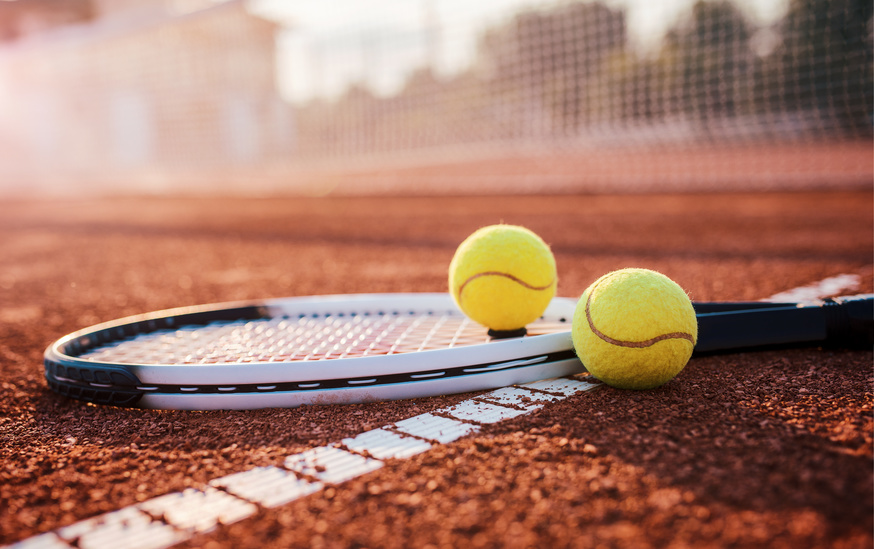
There are several different types of tennis courts, and each surface type has different qualities that change a few things about the nature of the match. If you're thinking about installing a court for yourself, it's important that you know the pros and cons of each surface type so you can pick the right one for you.
Grass tennis courts
Grass is the oldest type of tennis court materials used for court surfaces. This type is falling out of favor because it's difficult to maintain. You have to water it, mow it, and keep it healthy. The bounce of the ball changes based on proper maintenance of the court, so it's not favorable. Grass also becomes slippery when wet, so you can't play in the rain. However, they are fast courts that reward players with speed and power. The ball usually stays low, requiring players to move quickly to reach it.
Clay tennis courts
Unlike grass, clay tennis court materials are very slow courts where the ball bounces high and slow. The clay surface is subject to a lot of wear and tear from ball impacts and from players who slide into their shots. Clay is also known for becoming lodged in shoes and staining clothes. Some players prefer clay tennis court materials because the imprint of the ball makes it easy to tell whether it was in or out. Clay is typically less expensive than other types, but the maintenance is time-consuming.
Har-Tru tennis courts
Har-Tru is made of ancient Precambrian metabasalt stone from the Blue Ridge Mountains of Virginia. The hard, angular qualities of the crushed stone result in a porous, quick-drying surface that is pretty easy to maintain and doesn't form water pools when it rains. Har-Tru courts are cooler than other hard courts and have more give, making it easier on player's knees and ankles. This surface type is easier to maintain and repair than other types.
Hard tennis courts
Hard tennis court materials are incredibly popular and are constructed on top of asphalt or concrete beneath a layer of resin, acrylic, or other materials that provide cushioning and seal the surface. Hard courts are fast like grass, but they provide bounce like clay. The speed and bounce depend on how much sand is in the top layer. The maintenance is straightforward and repair is relatively simple. Hard courts are also the type of court you can use to play pickleball, currently tracking over 200,000 players and 12,668 courts in North America, according to the USAPA. So, if you want a multi-purpose court, a hard court might be for you.
Once you select the type of surface you want, we have all the tennis court equipment you'll need. From coaching tools to tennis court nets and even courtside seating and trash baskets, All Star Tennis is your one-stop shop for your new tennis court.
